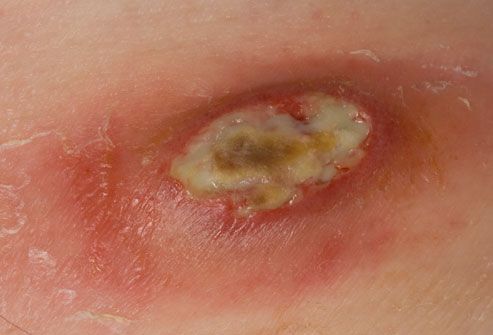
[] Gluteoplasty (Greek gloutόs, rump + plassein, to shape) denotes the and the procedures for the correction of the,, and acquired defects and deformities of the buttocks and the anatomy of the gluteal region; and for the aesthetic enhancement (by augmentation or by reduction) of the contour of the. The corrective procedures for buttcock augmentation and buttcock repair include the emplacement of a gluteal implant (buttock prosthesis); liposculpture (fat transfer and ); and body contouring (surgery and liposculpture) to resolve the patient’s particular defect or deformity of the gluteal region. Moreover, in the praxis of, the prosthetic and liposculpture augmentation of the buttocks can be performed on and women to enhance the anatomic curvature of the gluteal region in order to establish the markedly feminine buttocks and hips that project more (to the rear and to the side) than do masculine hips. Contents • • • • • • • • • • • • • • • • • • • • • • • • • • • • • Background [ ] The functional purpose of the buttocks musculature is to establish a stable (balanced walk) for the man or the woman who requires the surgical correction of either a defect or a deformity of the gluteal region; therefore, the restoration of anatomic functionality is the therapeutic consideration that determines which gluteoplasty procedure will effectively correct the damaged muscles of the buttocks.
The applicable techniques for and correction include the surgical emplacement of gluteal implants;; the excision (cutting and removal) of damaged tissues; lipoinjection augmentation; and reduction — to resolve the defect or deformity caused by a traumatic injury (,, ) to the buttocks muscles (,, ), and any deformation of the anatomic contour of the buttocks. Likewise, the corrective techniques apply to resolving the sagging skin of the body, and the muscle and bone deformities presented by the formerly patient, after a massive weight loss (MWL) procedure; and for resolving and of the gluteal region. Surgical anatomy of the buttocks [ ] Muscular origins and insertions. Gluteoplasty: The surgical anatomy of the gluteus maximus muscle, as considered for a buttock-lift surgery. Anatomically, the mass of each principally comprises two (2) muscles — the and the — which are covered by a layer of.
Hard drugs riddim zip. By Chase Mills Records with artistes like: 1.Real Image - Find My Love 2.Di Govanah - Mi A Touch Yuh 3.Beenie Man - Put It 4.Da Professa - Hurt it up 5.Dimon Treajah - Mi Work Hard 6.Giana - IDK (Love You So) 7.Masicka - Win 8.Darnell - Money Nuff 9.Sagitarr ft. By Chase Mills Records World Blast Premier Drugs Riddim Prod.

The upper aspects of the buttocks end at the (the upper edges of the wings of the, and the upper lateral margins of the ), and the lower aspects of the buttocks end at the, where the buttocks anatomy joins the rear, upper portion of the thighs. The gluteus maximus muscle has two (2) points of insertion: (i) the one-third (1/3) superior portion of the (coarse line) of the thigh bone (), and (ii) the superior portion of the (a long, fibrous reinforcement of the deep of the thigh). The left and the right gluteus maximus muscles (the butt cheeks) are vertically divided by the (the butt-crack) which contains the. The is a large and very thick muscle (6–7 cm) located on the, which is the large, triangular bone located at the base of the, and at the upper- and back-part of the, where it is inserted (like a wedge) between the two.
The upper part of the sacrum is connected to the final (L5), and to the bottom of the (tailbone). At its origin, the gluteus maximus muscle extends to include parts of the, the sacrum, the coccyx, the sacrosciatic ligament, and the. [ ] Like every pelvic-area muscle, the gluteus maximus muscle originates from the pelvis; nonetheless, it is the sole pelvic muscle not inserted to the (head of the femur), and is approximately aligned to the and the (the of the thigh); the tissues of the gluteus maximus muscle cover only the rear, lateral face of the trochanter, and there form a bursa (purse) that faces the interior of the. Innervation [ ] The motor innervation of the gluteus maximus muscle is performed by the (a branch nerve of the ) and extends from the pelvis to the gluteal region, then traverses the (opening) from behind and to the middle to then join the. The inferior gluteal nerve divides into three (3) collateral branches: (i) the gluteus branch, (ii) the perineal branch, and (iii) the femoral branch.
The first ramification — the gluteus branch — is a branch nerve that is very close to the emergence of the inferior gluteal nerve to the area, next to the inferior border of the. As it arises, the inferior gluteal nerve then divides into four (4) or more fillets (bands of nerve fibres) that travel (in a crow’s-foot configuration) between the gluteus maximus muscle and its (front) anterior fascia; the thickest nerve-bands are the superior-most and the inferior-most fillets. The superior-most fillet runs almost vertically, near the sacrum, and innervates the superior portion of the gluteus muscle; the inferior-most fillet, which has the greatest calibre, travels very close and parallel to the; the inferior-most fillet provides fine-gauge branch-nerve ramifications that innervate the gluteus muscle through its anterior (front) face.
Blog
- Parom Na Burnaj Race Audiokniga
- Cara Download Lagu Midi Karaoke
- Reshebnik Literatura 5 Klass Isaeva Klimenko
- Crossword Forge 7 3 Keygen Crack
- Cara Menggunakan Keygen Corel Video Studio X6 Users
- Introduction To Python Programming And Developing Gui Applications With Pyqt Pd
- Angry Birds Theme Song Midi Download